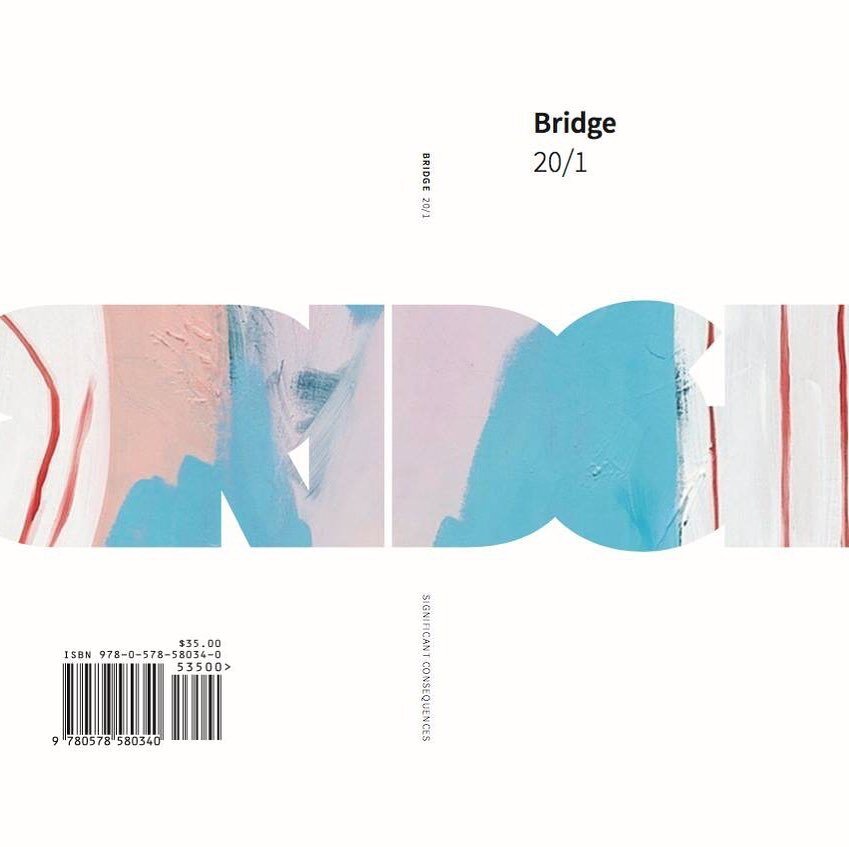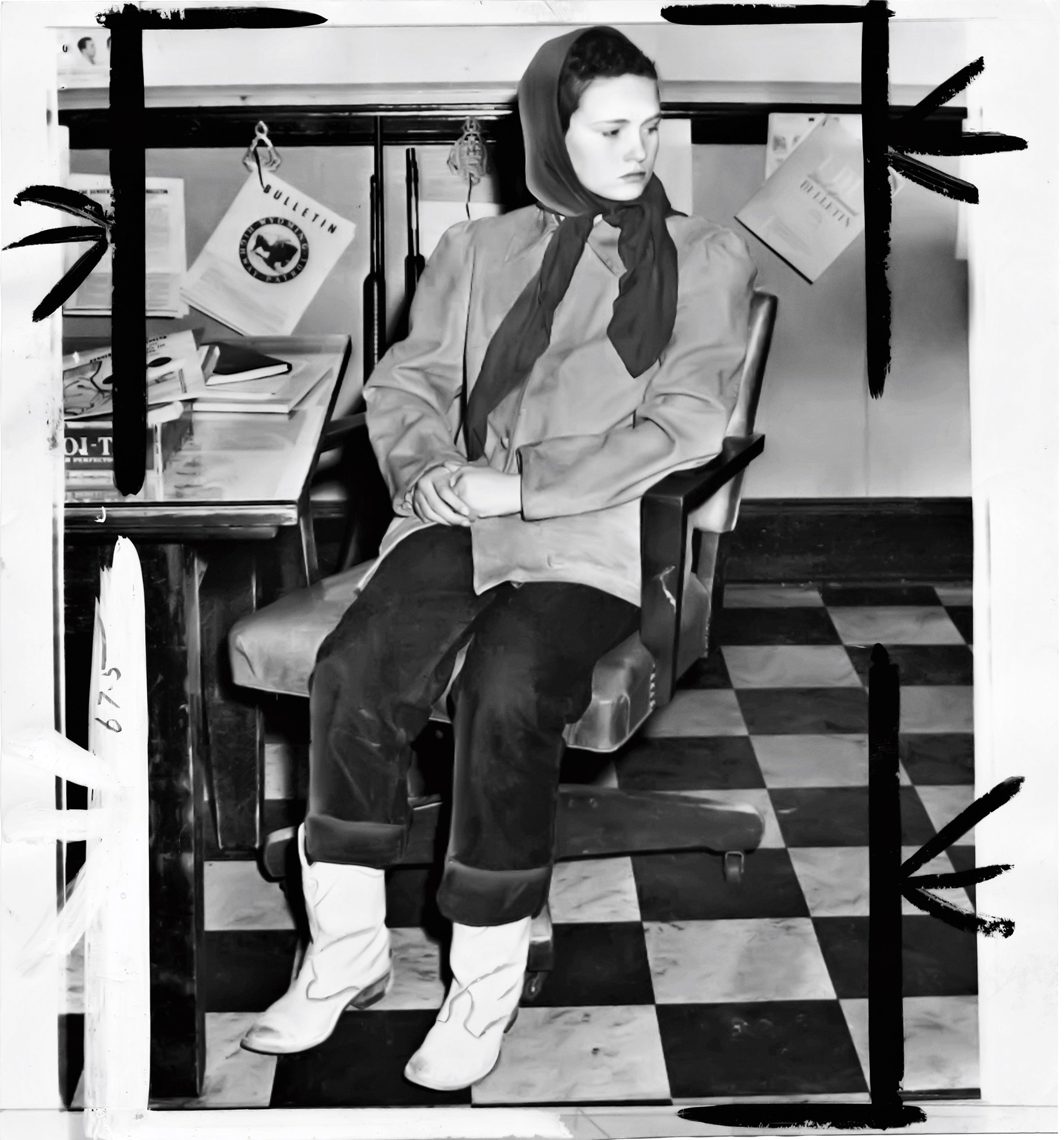REVIEW: The Power, Persuasion, and Fallacy of Photography’s Narratives; A review of “True Story: Photography, Journalism, and Media” at the Milwaukee Art Museum
Christian Patterson (American, b. 1972), Caril Ann (Captured), 2012. Gelatin silver print with acrylic and graphite. Image and sheet: 8 1/2 x 7 7/8 in. (21.59 x 20 cm). Purchase, with funds from the Herzfeld Foundation, Susan and Tony Krausen and the Betty Ciurej Memorial, M2013.22 © Christian Patterson.
REVIEW
The Power, Persuasion, and Fallacy of Photography’s Narratives; A review of True Story: Photography, Journalism, and Media at the Milwaukee Art Museum
The Milwaukee Art Museum
700 N Art Museum Dr.
Milwaukee, WI 53202
Nov 15, 2024–March 16, 2025
By Kristie Kahns
The idea of an objective image is a premise that never had a solid foundation within the history of photography. While the fidelity of a photographic capture of the scene before the lens proffers a factual image, the meaning remains contingent. Indeed, some of photography’s earliest practitioners and theorists readily understood that the constructed space of the photograph and the visual culture in which it circulated were contentious terrains.
The current photography exhibition at the Milwaukee Art Museum, True Story: Photography, Journalism, and Media, cautiously circumnavigates this tension––with a touch of irony in that title––through an exploration of the relationship between photography and the news. Drawing from the Museum’s permanent collection and installed in the Museum’s Herzfeld Center for Photography and Media Arts, the exhibition includes more than 100 objects that trace a twentieth-century chronology of the ways that photographers utilized and leveraged the medium to capture current events and convey a story.
Install photo courtesy of the Milwaukee Art Museum of the exhibition True Story: Photography, Journalism, and Media, November 15, 2024–March 16, 2025, in Herzfeld Center for Photography and Media Arts.
The first of three sections, “One Small Frame” displays an array of single images made by photojournalists, emphasizing the capacity of one photograph to tell an impactful, even if incomplete, story. While this section includes works by venerated photographers such as Robert Capa and Gordon Parks, it is dominated by photographs made by local Wisconsin photojournalists, capturing everything from a train wreck in Milwaukee in 1949 to a Green Bay Packers’ winning touchdown in the 1967 NFL championship game. The emphasis on Wisconsin news events gives local visitors a deeper connection to the stories displayed on the walls, fulfilling part of the Museum’s stated mission to present art that is relevant to the community of Milwaukee. Interestingly, the wall labels include the name of the photographer and the newspaper which originally published the photograph and original captions, underscoring the ecosystem of journalism in which these images were disseminated. Departing from singular images of wide-ranging historical moments, the second section, “A Unified Thread,” includes the work of four renowned photographers––Lewis Hine, Wayne Miller, Danny Lyon, and Larry Burrows––whose sustained commitments to the causes they covered for different publications or social justice movements remain definitive examples of photography’s power of persuasion. Lyon, for example, documented the civil rights activists of the Student Nonviolent Coordinating Committee, using his photographs to inspire action and support desegregation efforts. Included in the exhibition is one of his well-known photographs of John Lewis, kneeling in prayer with other demonstrators at a protest in Illinois in 1962, as well as photographs of a grief-stricken community in Birmingham after the bombing of the 16th Street Baptist Church in 1963.
Wayne Forest Miller (American, 1918–2013), Migrant workers, December 1949. Gelatin silver print. Image: 10 3/8 x 13 1/2 in. (26.35 x 34.29 cm) Sheet: 10 15/16 x 14 in. (27.78 x 35.56 cm). Gift of Wayne F. Miller Family, M2023.230 © Wayne F. Miller Estate
The poignant photographs by Lyon, Miller, and Hine are a deceptively gentle prelude for the encounter with the gripping photographs of the Vietnam War by Larry Burrows. In his photo essays for LIFE magazine, Burrows created a harrowing account of the war for nearly a decade; he was killed in 1971 when the helicopter he was riding in was shot down in Laos. The inclusion of two LIFE magazines that featured his photo essays displayed in vitrines provides essential context––not only because of the stature of LIFE for that era of photojournalism, but to understand the medium of the narrative. While the horrors of war are now livestreamed to us through our smartphones, in the 1960s this was how Americans were able to see what US soldiers were facing on the frontlines.
Install photo courtesy of the Milwaukee Art Museum of the exhibition True Story: Photography, Journalism, and Media, November 15, 2024–March 16, 2025, in Herzfeld Center for Photography and Media Arts.
The final section, “Media Messages” takes a very sharp turn, presenting works by artists who interrogate the role of photography and the media ecosystem in shaping cultural or historical narratives. Most salient is the film REPORT by experimental filmmaker Bruce Conner, a frenetic meditation composed of footage from the day of JFK’s assassination on November 22,1963; the sound of this piece literally permeates the entire exhibition, and the year of 1963 looms large in many of the photographs shown throughout the exhibition.
Works by Robert Heinecken provide critical commentary on the emerging experience of media consumption in the twentieth century; he created, for example, an interpretation of a cover of LIFE which reveals the jarring juxtaposition of presidential news with luxury advertisements.
Large-scale color photographs by Taryn Simon propose photography’s failures to uphold a “true story,” particularly within the criminal justice system. One such photograph from her project The Innocents––a dramatically lit and staged scene––depicts a man who was wrongfully convicted for murder and served 11 years of a death sentence, based on faulty visual identification. As a direct reproach to photography as a credible witness, an entire gallery of photographs from The Innocents would have been a devastatingly compelling conclusion to True Story; alas, the Museum holds only this one photograph from the series in their collection.
Robert Heinecken (American, 1931–2006), Untitled, from the series Are You Rea, 1964–68. Gelatin silver print. 5 7/16 x 7 1/4 in. (13.81 x 18.42 cm). Purchase, with funds from the Ralph and Cora Oberndorfer Family Trust, M2009.20 © The Robert Heinecken Trust, Chicago.
What is striking in “Media Messages” is a pivot from the idea of trust (integral to the field of journalism) to a sense of distrust and skepticism that the proliferation of mass media in the mid-twentieth century helped to create. The artists in this section, particularly Heinecken and Simon, offer perspectives on the evolution of this skepticism and the illusions of truth within the photographic medium. This is a significant, albeit disjointed, counterweight to the impulses found in the previous two sections: photojournalists carry their cameras to bear witness and to record the tumult of events from day to day, while the immersive commitment of documentary photographers is driven by their personal convictions and a desire to agitate and create tangible social or political change.
The lack of cohesion in “Media Messages” diminished the final impact of the exhibition, but a more fitting punctuation to True Story could be found in the concurrent exhibition Robert Longo: The Acceleration of History. This breathtaking exhibition by the internationally acclaimed artist includes hyper-realistic charcoal drawings depicting symbols of American culture and renditions of charged political events of the past decade. These monumental drawings, nearly photographic in their technical execution, are drawn from images that Longo collects from a variety of media sources. While they depict recognizable and viral scenes of recent years, including an evocative rendition of the Saudi journalist Jamal Khashoggi, the dramatized compositions are arresting, encouraging visitors to consider the fast pace of symbolic events through the long lens of a historian.
Install photo courtesy of the Milwaukee Art Museum of the exhibition Robert Longo: The Acceleration of History, October 25, 2024–February 23, 2025, in Baker/Rowland Galleries.
In his seminal work Reading American Photographs, the historian Alan Trachtenberg wrote, “Photographs do not become history automatically…They become history when they are conceived as symbolic events in a shared culture.” By underscoring the evolving role of photography in creating publics with a shared sense of reality, both of the exhibitions True Story and The Acceleration of History prompt visitors to consider how photographs, especially in our image-saturated society, come to have meaning and their ability to stand in for complex political or cultural narratives. Awakening visitors to the need for this sense of media literacy is an urgent and noble cause, particularly as our shared sense of reality via visual culture has fractured into spaces where the idea of a “true story” is more contested than ever.
Kristie Kahns works in the photographic field as an image-maker, educator, writer, and independent researcher, based in Chicago. She recently earned her MA degree from the School of the Art Institute of Chicago, and holds a BA in Photography from Columbia College Chicago.
Like what you’re reading? Consider donating a few dollars to our writer’s fund and help us keep publishing every Monday.






